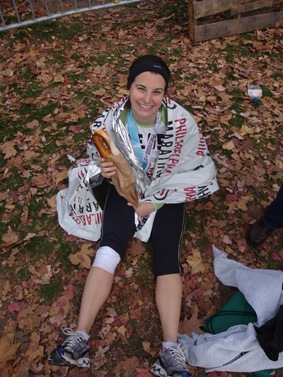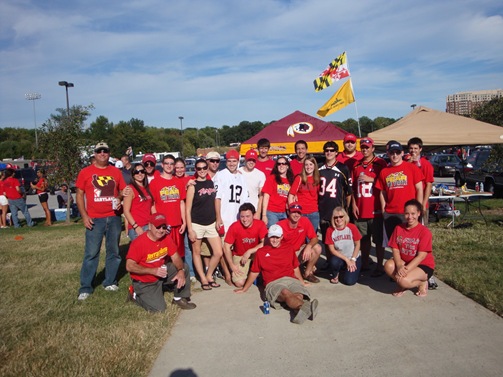Hi, I’m Amber from Girl with the Red Hair and @AmberYake on Twitter! I’m so excited to be guest posting for Ashley’s awesome Marathons + Moderation series!
 I started running in 2009 and I’ve ran one full marathon, four half-marathons and a handful of other races including several trail races. My first (and only so far) marathon experience was not the greatest and I think it’s because I did not take the "moderation" part of training seriously enough.I was too stuck to my training plan and ended up over training.
I started running in 2009 and I’ve ran one full marathon, four half-marathons and a handful of other races including several trail races. My first (and only so far) marathon experience was not the greatest and I think it’s because I did not take the "moderation" part of training seriously enough.I was too stuck to my training plan and ended up over training.
During my first training cycle when I got an injury in my back/hip/side I continued training through it for six months before finally seeking help! This ultimately resulted in me getting a torn tendon in my foot at mile 24 of my marathon (I still finished, but barely!)
I’m strongly considering doing my second marathon in the spring of 2012 and here are a few ways I plan on training differently:  What I did: Stuck to the plan, 100%. If something got in the way of a planned run I would freak out and figure out some way to make it up even if it meant burning myself out by doing a 10-mile run, 18-mile run and then a 20-mile run all within 10 days of each other (oh yes, I stupidly did this!)
What I did: Stuck to the plan, 100%. If something got in the way of a planned run I would freak out and figure out some way to make it up even if it meant burning myself out by doing a 10-mile run, 18-mile run and then a 20-mile run all within 10 days of each other (oh yes, I stupidly did this!)
What I plan to do:Be flexible! A plan is there to guide me. It’s not the be all, end all of the world. During my next marathon training cycle I’m going to take each week in stride. If I don’t feel well I will listen to my body. I’ve learned that getting a few quality workouts in each week is better than doing several junk runs.
What I did: Ignored the signs my body was sending me. I ended up having a chronic pain in my side (the hip/back/side issue I mentioned above) from over training for SIX MONTHS before I finally got it checked out. I literally would have pain in my side CONSTANTLY and I ran through it. Stupid. This ultimately resulted in me taking six weeks off from running.
What I plan to do: Listen to my body and what it tells me, back off and seek treatment at the first sign of injury or pain. 
What I did: Ran too high of mileage. Even though 40 miles per week is really low mileage for some it was too high for my injury-prone body and the week I hit my highest mileage (40 miles) was also the week all the injuries started popping up during my training cycle.
What I plan to do: Run lower mileage and cross-train like crazy. I will be running 3-4 times per week maximum and will likely max out at 35-37 miles during my next cycle. I plan to balance all the running with lots of swimming, yoga and strength training (something I definitely did NOT do last time). I know that yoga has kept me injury-free so far in 2011 while I trained for two half-marathons, a 25K trail race and my first sprint triathlon, so I know it will be a key part of my next marathon training cycle!
What I did: Trained alone. Well, I was training "with" my blog friend Lisa(who I ran the marathon with – we split off at mile 2 though) but since she lives 1,500 miles away I did every single training run alone. It became hard to motivate myself near the end of the cycle and I was doing a lot of negative thinking!
What I plan to do: Train with a group. If I do the marathon I’m thinking of doing in 2012 I’ll be joining a marathon training clinic that my local Running Room is putting on.
What I did:It wasn’t the best day out there during my marathon (think pouring rain the entire time) and I was so focused on a time goal that I didn’t truly appreciate the fact that I was running A MARATHON. When I crossed the finish line I immediately burst into tears because I was in pain, cold and wet and felt completely defeated. I also missed my time goal by 15 minutes.
What I plan to do:Enjoy the day. Smile. High-five people who are cheering. Cross the finish line with a HUGE smile on my face even if it’s an hour slower than my last marathon time! Finishing happy = a PR in my books 🙂
If you’ve ran more than one marathon what kinds of things did you learn from your first training cycle that allowed you to apply more "moderation" to your next one?














